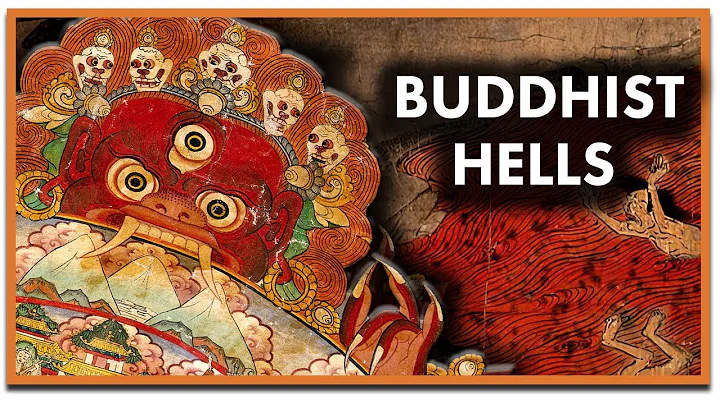
There is a temple 12 kilometers east of the old city of Luoyang City, Henan Province. It is located on the north side of the mountain, and looks to the south of the Luo River, with green trees and red walls, and the Buddhist temple pagoda, solemn and dignified. Outside the temple, there are two statues of white horses, with extensive carvings and majestic postures.
Walking into the mountain gate, there are the tombs of two monks, Shemoteng and Zhufalan , as well as many Buddha statues and Arhat statues, all of which are lifelike and have great artistic value. This is the number one ancient temple in China, which is regarded as the "ancestral home" and "Shiyuan" of Chinese Buddhism, , . It was built in the 11th year of Yongping in the Eastern Han Dynasty (68 AD), rebuilt in the 35th year of Jiajing in the Ming Dynasty (1556), and is a national key cultural relics protection unit for .
What I want to take you to today is the first ancient temple in China - Luoyang Baima Temple.
The first Buddhist temple in China
A long, long ago (more than 1900 years ago), an emperor dreamed at night that a tall, golden god flew from afar and landed in front of the Imperial Palace. The emperor dreams of the golden god, with a big meter of six feet, and the sun and moon are bright on the neck; , the golden god, , is called "Buddha".
The emperor who dreamed of Buddha was Emperor Ming of the Eastern Han Dynasty Liuzhuang . During his reign, Emperor Ming of Han, the administration was clear and clear, and the territory was stable, and a prosperous and peaceful era emerged.
Episode 3 Emperor Ming of Han dreamed of the Golden Buddha at night, and felt that the matter was very important, so he sent envoys Yulin doctor Cai Yan, Qin Jing and ten other people to go on missions to seek Buddhist scriptures and Buddhist teachings. In the eighth year of Yongping (65 AD), Cai, Qin and other Eastern Han envoys bid farewell to the imperial capital and embarked on a journey of "seeking scriptures in the West".
Over the 800-mile quicksand that is deserted and cannot grow in no grass, climbing the vast paulownia where the cold wind drives geese and snow fly thousands of miles, and coming to the Great Yuezhi Kingdom, he happened to meet the Indian monk who was traveling and teaching locally, Buddhism The master took Moteng and Zhu Falan and saw the Buddhist scriptures and the statue of Sakyamuni and , , and begged the two high monks Teng and Lan to go to China to spread the Dharma and teach.


Shemoteng and Zhu Falan
In the tenth year of Yongping (67 AD), the Han Dynasty sent Buddhist monks to carry Buddhist scriptures and Buddha statues on white horses to return to the capital. Emperor Ming of Han was very happy to see the Buddhist scriptures and Buddha statues. He treated the two Indian monks with great respect and personally received them, and placed them in the official office responsible for diplomatic affairs at that time - Honglu Temple .
In the 11th year of Yongping (68 AD), Emperor Ming of Han ordered the construction of a monk's house on the north of the Sanli Imperial Road outside the west Yongmen of Luoyang City. In order to commemorate the white horse carrying scriptures, it was named "White Horse Temple". This is in the eastern land, the country of Zhou, Confucius, Lao and Zhuang, the shore of the Luo River, and at the foot of the emperor, the earliest Buddhist temple in China, Luoyang Baima Temple. The word "歌" originated from the word "歌" in "Honglu Temple". Later, the word "歌" became a general term for Chinese temples. Shemoteng and Zhu Falan translated the "Forty-Two Chapters Sutra" here, which is the first Chinese translation Buddhist scripture in China.
After Shemoteng and Zhu Falan, many Western monks came to Baima Temple to translate scriptures. In the more than 150 years after AD 68, there were 192 pieces, totaling 390. Five volumes of Buddhist scriptures are translated here, and White Horse Temple has become the well-deserved first Buddhist scripture translation venue in China.
Cao Wei Ganlu fifth year (260 AD), a ceremony of receiving ordination was held at Baima Temple. This is an event destined to be deeply engraved in the history of Chinese Buddhism. On this day, Zhu Shixing climbed to the precepts altar according to the "Karma Method" and knelt in front of the Buddha for a long time, becoming the first monk in the Han area of China to officially receive the precepts of monks.



Luoyang White Horse Temple Daxiong Hall

Luoyang White Horse Temple Bell Tower
has the "ten firsts" in the history of Chinese Buddhism
The White Horse Temple has a very important position in the history of Chinese Buddhism. It is called " Shiyuan " and "ancestral courtyard". The reason why White Horse Temple is called "Shiyuan" "Ancestral Court" is because White Horse Temple has the ten firsts in Chinese Buddhist history, namely "Ten Ancient Ancestral Courts".
White Horse Temple—— The first ancient temple in China ;
White Horse Temple—— The first temple in China ;
Qiyun Pagoda Courtyard—— China's first ancient pagoda ;
Yongping seeks the Dharma— China's first journey to the West ;
Shemoteng and Zhu Falan— The first Indian monk who came to China to teach Buddhism The first Indian monk to come to China to teach Buddhism ;
Baye Leaf Sutra —— The earliest Sanskrit Buddhist scriptures introduced to China ;
White Horse Temple Cool Terrace—— China's first translation temple ;
"The Buddha's Forty-Two Chapters"—— China's first Chinese Buddhist scriptures ;
"Sanghe Precepts" - China's first Chinese Buddhist rules ;
Zhu Shixing - China's first Chinese Buddhist scriptures h.
any of these ten "firsts" are unsurpassable.

Qiyun Pagoda Courtyard - China's first ancient pagoda

In the 3rd century AD, the first Central Plains monk who formally received the precepts and the first to travel west to seek the Dharma appeared in the history of Chinese Chinese Buddhism, Zhu Shixing. Zhu Shixing's journey to the west seeks the Dharma, and for the ancestors and great masters who went west to seek the Dharma, such as Faxian, Baoyun, Xuanzang, , etc., set a brilliant example of sacrificing oneself to seek the Dharma,
Qiyun Tower Courtyard—The only monks and nuns in Henan
Luoyang The Qiyun Pagoda Courtyard of Baima Temple is located 200 meters southeast of the Baima Temple Mountain Gate. It is known as the White Horse Temple in Luoyang East. It is the only monks and nuns temple in Henan. The main buildings in the courtyard are the Qiyun Tower rebuilt by Jin Dynasty and the newly built hangout hall, living hall , Zen room, etc.
Among them, Qiyun Pagoda was first built during the reign of Emperor Ming of the Eastern Han Dynasty. It was originally called the "Sakya Sakyamuni Pagoda". It was later destroyed by war and was rebuilt in the fifteenth year of Dading in the Jin Dynasty (1175). Jin Xiu Sakyamuni Relic Pagoda is a square, stacked dense eaves brick pagoda with a total of 13 floors and a height of about 25 meters. It is one of the earliest existing Jin Dynasty ground buildings in Luoyang. In the Qing Dynasty, the abbot of Luoyang Baima Temple was based on Ru Xiu. The records of Emperor Ming of the Eastern Han Dynasty creating the Qiyun Tower were renamed "Qiyun Tower".

Luoyang Baima Temple Qiyun Pagoda Courtyard

Baima Temple architectural layout
1990, Luoyang Baima Temple’s main buildings include the temple’s mountain gate, hall pavilion, and Qiyun Pagoda Courtyard. In 1990, based on the original buildings, Luoyang White Horse Temple added a living room and a Zen room in the courtyard of the Baima Temple, such as the Bell and Drum Tower, the Thai-style Buddhist Temple, the Jade Buddha Hall and the Qiyun Tower.
Luoyang White Horse Temple currently covers an area of about 34,000 square meters and has more than 100 buildings of all sizes. The temple faces north and south, with a symmetrical pattern of the central axis, regular layout, clear primary and secondary. The main buildings in the temple are distributed on the central axis, from south to north are the mountain gate, the Heavenly King Hall, the Great Buddha Hall, the Daxiong Hall, the Guide Hall and the Balcony Platform. There are also be bell and drum towers, the Door Hall, and the Yunshui River on both sides. Hall, living room, dining hall, ancestral hall , Zen hall, abbot's courtyard and other ancillary buildings.
Temple bell and drum towers are both square hip roof double eaves and two-story pavilions, with a length and width of the bottom of the base, covered with gray cylinder tiles and lints and painted, and are built on the stone base.
"Ma Temple Bell" was once known as one of the eight major scenic in . Nowadays, every year when the old and new year are reciprocating, people gather in White Horse Temple to listen to monks ring the auspicious bells of the New Year, accompanied by melodious sound waves, welcoming the happiness and auspiciousness, peace and peace of the new year.

In recent years, Myanmar , India and Thailand have copied the most distinctive Buddhist buildings in their country next to the White Horse Temple, including Yangon Grand Golden Pagoda , Indian Sanchi Pagoda, Thai Buddhist Temple, etc.


Although Buddhism originated in India, it has developed in China. The first two hundred years of Buddhism taking root and spreading in China were closely related to White Horse Temple.
After the Han and Wei dynasties, Chinese Buddhism flourished. Not only has it had a significant impact on the thoughts and lives of the Chinese people, it has also gradually spread through China to , Vietnam, , North Korea, Japan and other countries.
The ancient buildings, Buddhist statues, sculpture art, painting art, etc. of White Horse Temple are from the hands of ancient craftsmen and working people, shining with the wisdom of the Chinese nation.
This is the product of China's first Western Heaven seeking Dharma, and it is the residence of the monks who came to China to preach the Dharma; the first Chinese Buddhist scriptures and Chinese precepts were born here, and the first Chinese Han monk was born... In short, Baima Temple It is closely linked to many "firsts" of Chinese Buddhism, which makes it a veritable "ancestor" and "transmitting source" of Chinese Buddhism.

Luoyang Baima Temple Ground Zen

Luoyang Baima Temple Ground Zen
Image source | Ten wishes encyclopedia, Luoyang Baima Temple







![[English] Who Am I - Lecture 1 - Ven. Guan Cheng - DayDayNews](https://i.ytimg.com/vi/KU0fUs2It5o/hq720.jpg?sqp=-oaymwEcCNAFEJQDSFXyq4qpAw4IARUAAIhCGAFwAcABBg==&rs=AOn4CLDFpQUN_QwRfC7bmP4sUadq-RcYdg)
![A Moving Masterpiece 清明上河图 [English narration] - DayDayNews](https://i.ytimg.com/vi/kxff-4GktOI/hqdefault.jpg?sqp=-oaymwEcCOADEI4CSFXyq4qpAw4IARUAAIhCGAFwAcABBg==&rs=AOn4CLBtHGLeUpJNCYDJYnZTuISQ1N5Vag)


